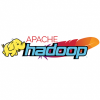Related Content
 |
Exploring Big Data Options in the Apache Hadoop Ecosystem With the emergence of the World Wide Web came the need to manage large, web-scale quantities of data, or “big data.” The most notable tool to manage big data has been Apache Hadoop. Let’s explore some of the open source Apache projects in the Hadoop ecosystem, including what they're used for and how they interact. |
|
 |
When to Use Different Types of NoSQL Databases Web-scale data requirements are greater than at a single organization, and data is not always in a structured format. NoSQL databases are a good choice for a larger scale because they're flexible in format, structure, and schema. Let’s explore different kinds of NoSQL databases and when it’s appropriate to use each. |
|
 |
Selecting a Cloud Service Cloud services are relatively new, and for those used to downloading and installing software, it may be daunting at first when trying to figure out which cloud service to use. Let’s analyze the different options—infrastructure as a service, platform as a service, and software as a service—and when you should use each. |
|
 |
The Importance of Data Encryption in Cybersecurity Encryption protects private data with unique codes that scramble the data and make it impossible for intruders to read. Despite a data breach, encryption ensures that an institution’s private data is safe, even when attackers get past the firewall. Here are four reasons to use data encryption cybersecurity measures. |
|
 |
Designing Data Models for Self-Documented Tests When testing applications, documenting and interpreting test results can be a challenge. Data models enable us to collect and process test data more dynamically and uniformly. To design effective data models for self-documented tests, there are three important things to consider: what to document, collect, and report. |
|
 |
Building Culturally Inclusive AI Models For us to build the most effective technology, we need to learn from our past and build our future with more comprehensive data sets with cultural intelligence. This means AI that recognizes your story, chatbots that speak to you more authentically, and smart assistants that have inclusive data about your ancestry. |
|
 |
Explaining Hardware Virtualization and Containerization Virtualization is the abstraction of a computer resource—such as hardware, memory, storage, an operating system, a desktop machine, or a network—built on top of the physical resource. There are many types of virtualization, and here, we look at virtualization of hardware and of an operating system, or containerization. |
|
 |
What’s Different about Testing Serverless Applications? Serverless computing is a DevOps technique that uses cloud-provided runtimes to execute code components in a defined workflow. Testing is easier in some ways with this model, but more difficult in others. Let's dive into the ways testing serverless applications and components is different from traditional architecture. |





